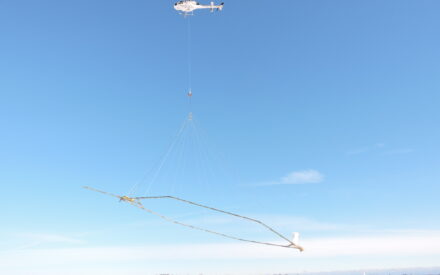While early 2023 Wisconsin weather was characterized by typical average temperatures and precipitation, wide variability and erratic weather created cool, wet early spring field conditions. In May, much of the state experienced a rapid shift to hot, dry weather. The speed with which the drought came on led to the designation of “flash drought” for much of the state, and for UW-Madison State Climatologist Steve Vavrus to call this time “remarkable.” By late May, 66% of the state was under “abnormally dry conditions.” Dry conditions continued throughout the summer and by August, much of the state was experiencing “extreme” or “exceptional” drought, the most intense category in the US Drought Monitor ranking system.
Given the rapid onset of historically dry conditions, farmers were faced with the need to make quick decisions regarding farm management. In the early part of the season, farmers were grappling with planting decisions. As the season progressed, lack of moisture created challenges for herbicide activation, creating unusual weed pressure and significant concern about providing adequate forage and water to livestock. Extreme weather conditions like those experienced in 2023 are expected to continue as climate change advances. It is expected that Wisconsin will continue to experience an increase in average temperature as well as an increase in extreme weather events, including both flooding and drought, according to the Wisconsin Initiative on Climate Change Impacts.
Equipping Farmers with Critical Data
In response to the rapid onset of drought conditions in early summer, the UW–Madison Extension Crops & Soils program mobilized quickly to provide up to date information to farmers and professional agronomists on a regular basis by using established and novel communication channels to deliver timely resources. Extension faculty with crop production expertise were recruited to provide research-based information to assist agricultural producers in making the best possible management decisions under drought conditions. Two dedicated drought webinars were held in June and July 2023, with 238 and 111 attendees, respectively. Drought management topics were included in many of the regularly scheduled bi-monthly Badger Crop Connect webinars which served 426 unique participants over 13 sessions in 2023. Drought implications for resilience and sustainability were highlighted during the annual fall Badger Crops and Soils update meetings. Four in-person sessions were held in locations across the state in November 2023, reaching 192 professional agronomists, crop consultants, farmers, and educators.
Extension faculty and educators also shared research-based information to support sound decision-making throughout the growing season through a variety of channels, including 11 articles in popular press or regional newsletters, seven field days or workshops, two interviews with local news media and the creation of a new project to share weekly slides with Wisconsin-specific weather data, a collaboration between Extension, the USDA Midwest Climate Hub, the Wisconsin State Climatology Office, and USDA-NRCS.
In addition to providing crop management information, improving the accuracy of both weather forecasts and radar precipitation estimates are key for real-time decision-making on drought management. Engaging farmers, Certified Crop Advisors, and citizens in providing daily citizen science weather data from across the state improves the resolution of drought mapping and extent. Working with the Wisconsin Association of Professional Agricultural Consultants (WAPAC), the National Weather Service, State Climatology Office and agricultural media, we created and implemented a Wisconsin-focused social media recruiting campaign in March. As a result of this effort, more than 100 individuals have signed up during the March campaign in each of the past three years, and the number of reporting observers has increased by 54% in the past 12 months.
Navigating Difficult Drought Decisions
The Extension 2023 drought response has had positive impacts across the state by providing immediate resources for farmers navigating difficult decisions as well as opening a door for conversation about ways to increase long-range sustainability and resilience. A combined evaluation survey for the Badger Crops Connect webinar series and the November in-person Badger Crops and Soils Update events found that 100% of respondents said both that the information shared was useful and that it allowed them to make better crop management decisions and/or recommendations to those they advise.
In addition to the creation of drought specific resources, the extreme weather of 2023 has provided an entry point to discuss long-range strategies that farmers can implement to increase resilience in the face of ongoing climate change. Over 60% of evaluation respondents said they plan to make long-term management changes, within five to 10 years, to increase resilience to extreme weather, including adding cover crops and improving soil fertility management and crop residue management. Over 40% of evaluation respondents said that they plan to implement strategies related to climate information shared by Extension in 2023. Discussion of the extreme and atypical weather Wisconsin has experienced in 2023 has allowed more direct conversations with farmers and industry professionals about the anticipated impacts of climate change and the crop and pest management impacts we expect to see in the near- and long-term future. This shift in receptiveness to conversations about extreme weather or climate change is a critical step in implementation for a range of practices.
Download Article

 Depth-to-Bedrock: Updated Mapping & Decision-Making
Depth-to-Bedrock: Updated Mapping & Decision-Making Building High-Quality Programs to Help Youth Thrive
Building High-Quality Programs to Help Youth Thrive Nature’s Navigators: Supporting Neurodiverse Learners
Nature’s Navigators: Supporting Neurodiverse Learners Centering Culture & Language in Leadership Programs
Centering Culture & Language in Leadership Programs


